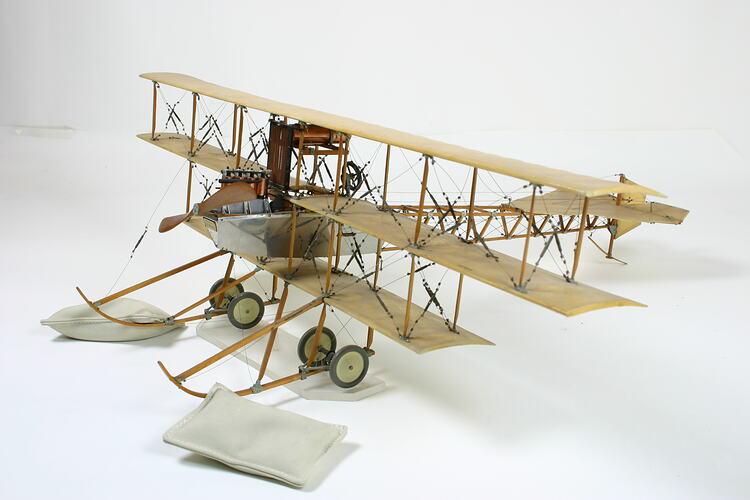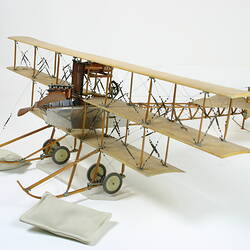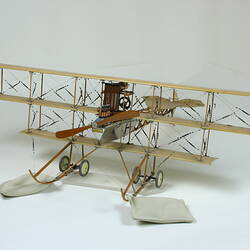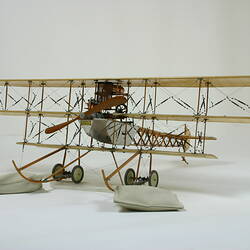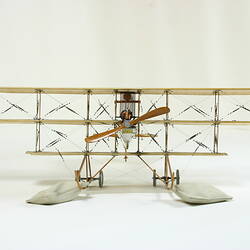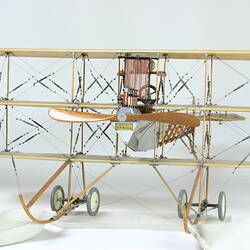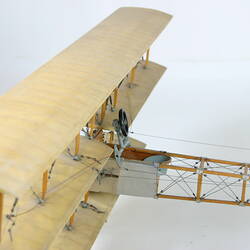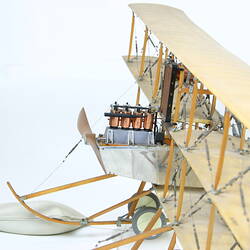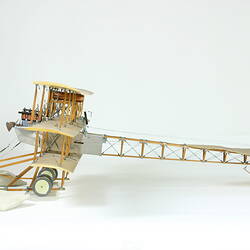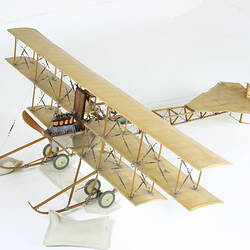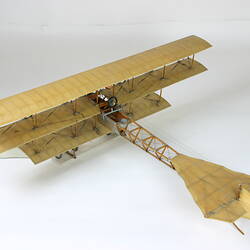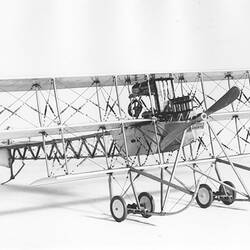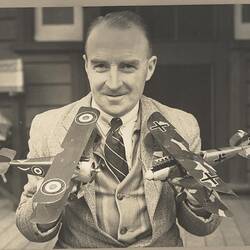Summary
Aircraft History
Alliot Verdon Roe was one of the earliest aircraft designers and builders in Edwardian Britain. He had been following the progress of the Wright brothers in America and began building scale gliding and elastic-powered models of Wright type machines between 1905-07. He also offered to act as the Wright's agent in Britain which was politely declined. Roe progressed to full scale powered aircraft and built a biplane based on his 'forward steering plane' model. The aircraft was taken to Brooklands racetrack for testing in late 1907. A series of tests began which consisted of towed runs behind a car. Despite claims that he made the first powered flight in July 1908, it is clear that the aircraft was under-powered, unstable and was not successful. Roe learned many lessons from his first machine and built a succession of designs with improved stability and power. His Roe II and Roe III triplanes made many successful flights. The Roe III carried a single passenger. The 1910-11 Roe IV triplane was the last of Roe's triplane designs. It was flown at Brooklands and used at Roe's flying school. It suffered a number of accidents at the hands of inexperienced pupils. By 1912 Roe had switched his attention to biplanes and produced the Type D which became the forerunner of a family of biplanes leading to the famous Avro 504 series. Roe's company (Avro) later became one of the most important British aircraft manufacturing firms. During World War II Avro produced the Lancaster bomber.
Model History
This scale madel of the Roe IV triplane was commissioned by the Museum and was built by Harold P. Wood in 1924.
More Information
-
Collection Names
-
Collecting Areas
-
Acquisition Information
Purchase
-
Modelmaker
Mr Harold P. Wood, Melbourne, Greater Melbourne, Victoria, Australia, 1924
-
Manufacturer of Item Depicted
-
Classification
-
Category
-
Discipline
-
Type of item
-
Keywords
